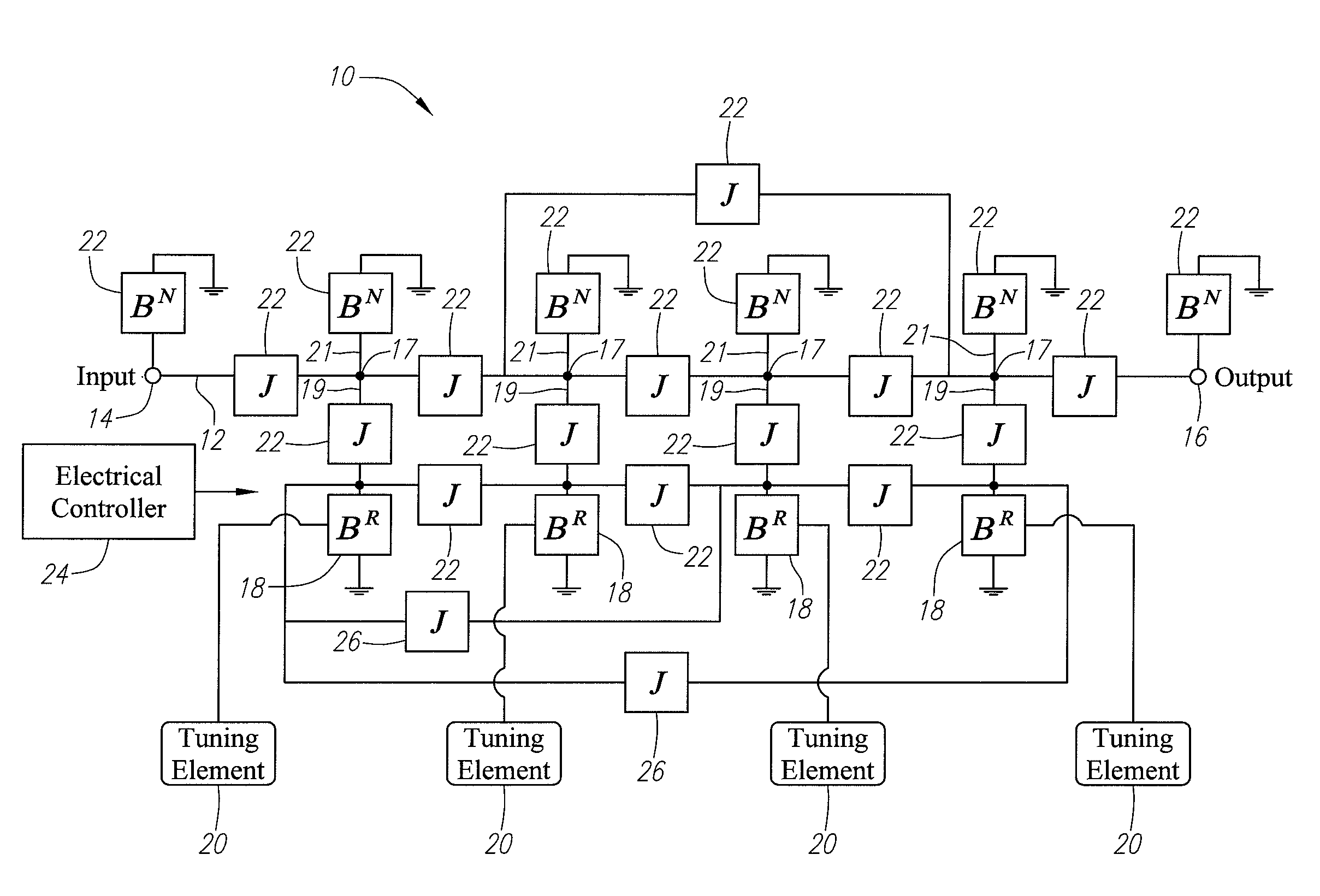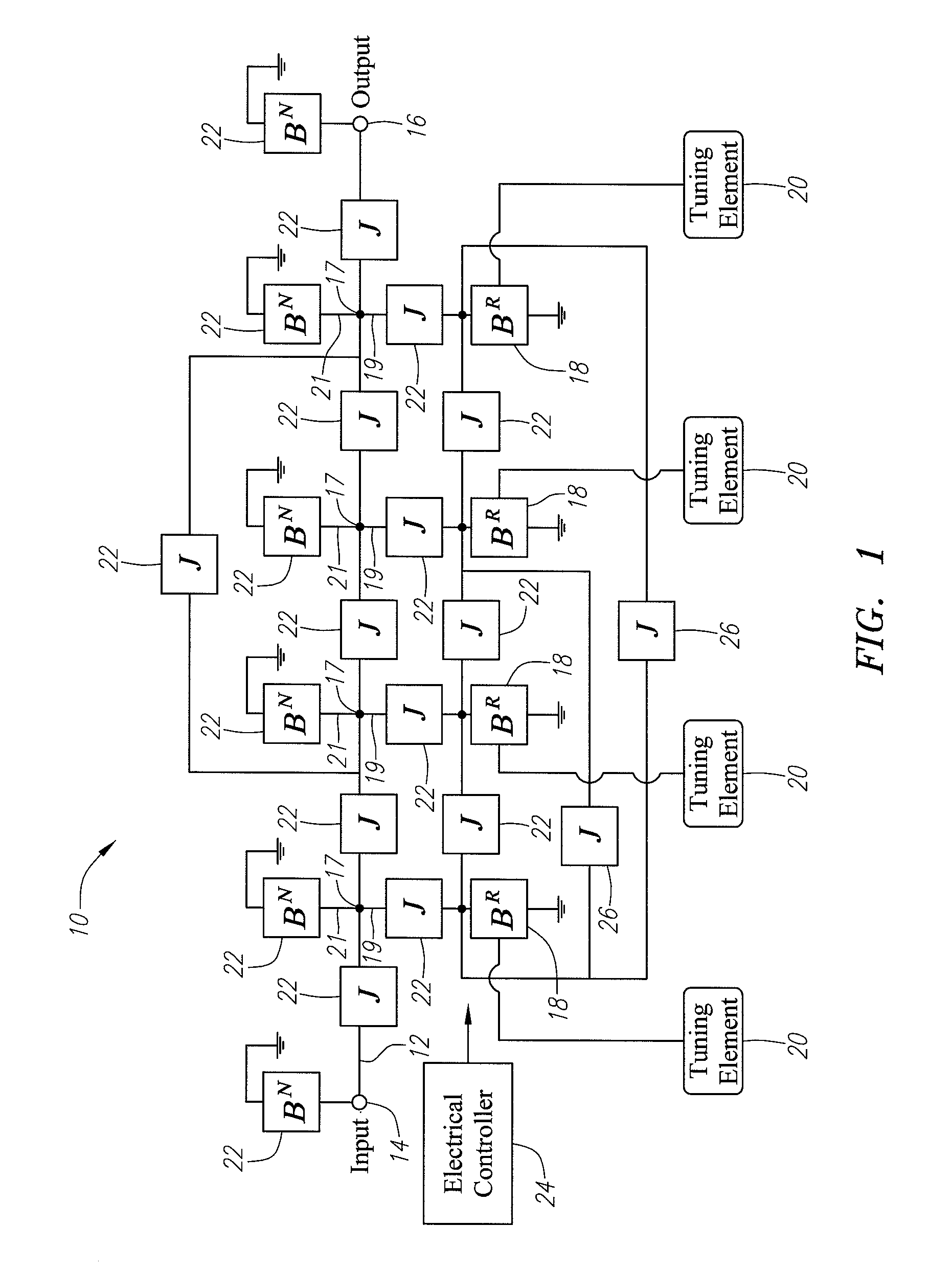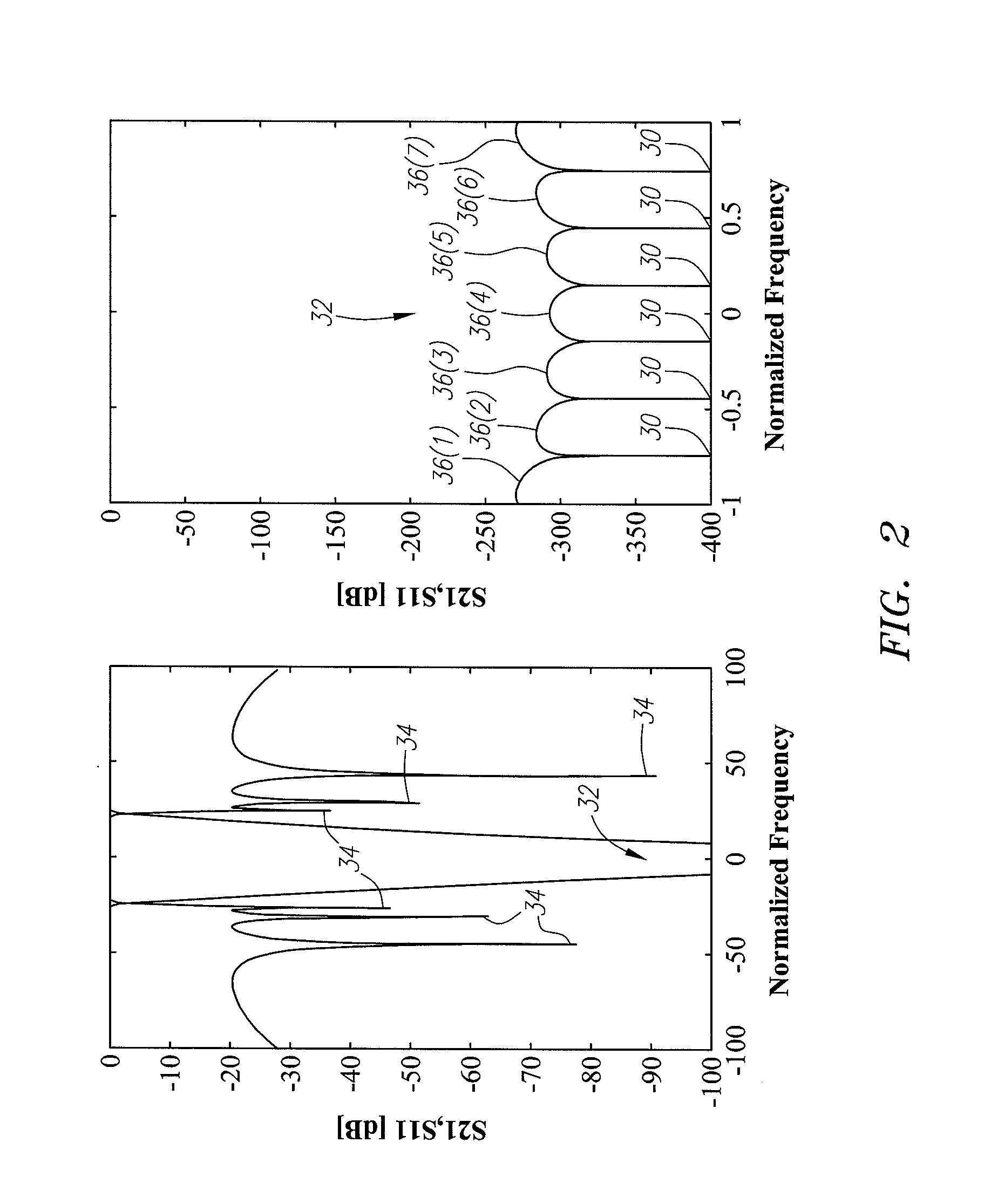Low-loss tunable radio frequency filter
- Summary
- Abstract
- Description
- Claims
- Application Information
AI Technical Summary
Benefits of technology
Problems solved by technology
Method used
Image
Examples
Embodiment Construction
[0050]Referring to FIG. 1, a tunable radio frequency (RF) filter 10 constructed in accordance with the present inventions will now be described. In the illustrated embodiment, the RF filter 10 is a band-pass filter having pass band tunable within a desired frequency range, e.g., 800-900 MHz or 1,800-2,220 MHz. In a typical scenario, the RF filter 10 is placed within the front-end of a receiver (not shown) behind a wide pass band filter that rejects the energy outside of the desired frequency range. The RF filter 10 generally comprises a signal transmission path 12 having an input 14 and an output 16, a plurality of nodes 17 disposed along the signal transmission path 12, a plurality of resonant branches 19 respectively extending from the nodes 17, and a plurality of non-resonant branches 21 respectively extending from the nodes 17. The RF filter 10 further comprises a plurality of resonant elements 18 (in this case, four) between the input 14 and output 16, and in particular coupled...
PUM
| Property | Measurement | Unit |
|---|---|---|
| Frequency | aaaaa | aaaaa |
| Superconductivity | aaaaa | aaaaa |
| Reflection | aaaaa | aaaaa |
Abstract
Description
Claims
Application Information
 Login to View More
Login to View More - R&D
- Intellectual Property
- Life Sciences
- Materials
- Tech Scout
- Unparalleled Data Quality
- Higher Quality Content
- 60% Fewer Hallucinations
Browse by: Latest US Patents, China's latest patents, Technical Efficacy Thesaurus, Application Domain, Technology Topic, Popular Technical Reports.
© 2025 PatSnap. All rights reserved.Legal|Privacy policy|Modern Slavery Act Transparency Statement|Sitemap|About US| Contact US: help@patsnap.com



